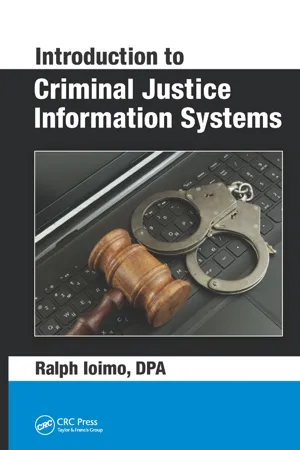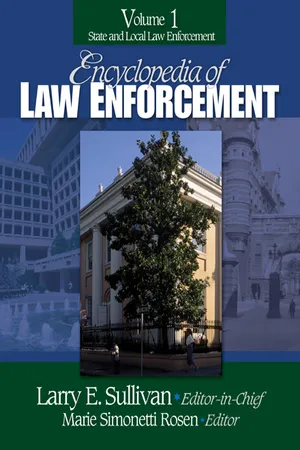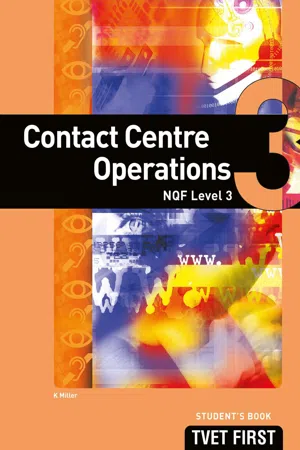History
9/11
9/11 refers to the terrorist attacks on September 11, 2001, when four commercial airplanes were hijacked by members of the extremist group al-Qaeda. Two planes were flown into the Twin Towers of the World Trade Center in New York City, causing their collapse, while another plane struck the Pentagon in Arlington, Virginia. The fourth plane crashed in a field in Pennsylvania after passengers attempted to regain control. The attacks resulted in nearly 3,000 deaths and had profound and lasting impacts on global politics and security.
Written by Perlego with AI-assistance
Related key terms
1 of 5
5 Key excerpts on "9/11"
- Ralph Ioimo(Author)
- 2018(Publication Date)
- Routledge(Publisher)
chapter three 9-1-1: Its history, current status, and the next generation9-1-1 is a national emergency number that has advanced over the years and has undergone and still faces many challenges.List of definitions
ALI—automated location information ANI—automated name information Cellular phones—phones that communicate through the cellular network and not wired to a physical location Enhanced 9-1-1—refers to the 9-1-1 system’s ability to provide a caller’s name and address MSAG—Master Street Address Guide NG9-1-1—represents the next generation of 9-1-1 systems PSAP—public safety answering point SSAP—Secondary Public Safety Answering PointIntroductionThe concept of a single number to call the police or fire has been around for many years. In the early days of the telephone, citizens would often call the operator and ask to be connected to police or fire, depending on the emergency. Frequently, the operator activated the city’s fire alarm and acted as an informational clearinghouse when an emergency such as a fire occurred. When North American cities and towns began to convert to rotary dial or “automatic” telephone service, many people became concerned about the loss of the personalized service provided by local operators. Telephone companies partially solved this problem by telling people to dial “0” for the local assistance operator if they did not know the fire or police department’s full number (Swihart, 1995). As telephone technology progressed, many agencies provided a distinctive seven-digit telephone number that was easy to remember, e.g., 527–1111. Of course, the use of a local phone number limits the caller to that community.The idea of a single national emergency number is not new. Other nations, such as Great Britain, had a three-digit emergency reporting number as early as 1937 (Pivetta, 1993). It was not until 1967 that the concept emerged in the United States (Pivetta, 1993). The President’s Commission on Law Enforcement recommended in 1967 that a single emergency telephone number be established (Pivetta, 1993; Swihart, 1995). In 1958, the U.S. Congress first investigated a universal emergency number for the United States and finally passed the legal mandate in 1967. The installation of the first system occurred in Haleyville, Alabama, and the first call occurred on February 16, 1968 (About.Com, n.d.). AT&T had originally planned to implement a 9-1-1 system for Huntington, Indiana; however, Alabama Telephone worked diligently to become the first telephone company to provide this service.- eBook - ePub
Policymaking for Critical Infrastructure
A Case Study on Strategic Interventions in Public Safety Telecommunications
- Gordon A. Gow(Author)
- 2019(Publication Date)
- Routledge(Publisher)
technology forcing, raising important considerations on some of the finer points of this intervention strategy as it might apply more generally to the management of critical infrastructure.The Genesis of Wireless E9-1-1
Over the course of some thirty-five years, public safety groups in the United States developed a rather advanced system to provide the public with the capability to request emergency services by dialling the digits ‘9-1-1’ (National Emergency Number Association, 2002a). The original 9-1-1 concept was to provide a simple voice connection between the caller and an operator designated to handle emergency calls and dispatch appropriate agencies as required. In the early days of the service, this operator was often the local fire or police department but in many large centres today this function has evolved into a specialist role provided by a separate municipal or regional agency. With the subsequent development of more sophisticated telecommunications services an enhanced ‘E9-1-1’ system has become available, in which the voice connection is augmented with caller-ID and street address information associated with the telephone number of the handset used to make the call (National Emergency Number Association, 2002b). With this additional information provided in real-time to the operator, emergency calls can be quickly directed to appropriate jurisdictions for dispatch and in the event a caller is unable to provide their location verbally to the operator, emergency personnel can be given precise directions on the point of origin of the call. In the case of trouble not known calls, emergency operators are able to use caller-ID information to support follow-up investigations. This combination of Automatic Number Identification and Automatic Location Identification—or ANI/ALI (pronounced ‘Annie-Alley’)—functionality has since become the benchmark feature of E9-1-1 across North America. - eBook - PDF
- Larry E Sullivan, Marie Simonetti Rosen, Dorothy M Schulz, M. R. Haberfeld, Larry E. Sullivan, Marie Simonetti Rosen, Dorothy Moses Schulz, Maria (Maki) Haberfeld(Authors)
- 2004(Publication Date)
- SAGE Publications, Inc(Publisher)
C CALLS FOR SERVICE The number 9-1-1 has been designated by the Federal Communications Commission (FCC) as the three-digit “Universal Emergency (telephone) Number” for public use throughout the United States to request emergency assistance. This nationwide telephone number is intended to give the public direct access to a public safety call center, commonly referred to in the emergency communications industry as a Public Safety Answering Point (PSAP). A PSAP, typically managed by a local or county government, is staffed by call-takers (people who answer the call) and dispatchers (people who assign the call to the appropriate personnel—police, fire, and/or emer-gency medical services). The 9-1-1 systems are commonly funded through a user fee that is assessed to subscribers of commercial, residential, and cellu-lar telephone service as a portion of their monthly telephone bill. In 1967, during the administration of President Lyndon Johnson, The Commission on Law Enforce-ment and Administration of Justice recommended the concept of a single number for reporting police emergencies. The first 9-1-1 call was placed in Halleyville, Alabama, in 1968. As of October 2002, 99% of the population and 96% of the geographic United States have access to 9-1-1, and an estimated 200 million calls are placed over municipal and county 9-1-1 systems each year. It is estimated that there are more than 7,500 PSAPs in the United States. There are three types of 9-1-1 systems: Basic 9-1-1 is a communication system in which the call is delivered to a PSAP without any type of caller identification information. Automatic Number Identification (ANI) Enhan-ced 9-1-1 is a system in which the call is delivered to the PSAP in such a way that the call-taker is able to see the caller’s telephone number on a special screen. - eBook - PDF
Contact Centre Operations NQF3 SB
TVET FIRST
- K Miller(Author)
- 2013(Publication Date)
- Macmillan(Publisher)
Probably the most famous emergency number internationally is that of 911 – the central emergency Contact Centre in the United States of America. These types of emergency Contact Centres serve the citizens of a specific country or region. Emergency Contact Centres are also found in the private sector where roadside assistance or security services can be accessed by dialling in to a Contact Centre in which specially trained Contact Centre agents can either provide assistance themselves, dispatch help, or connect the caller to the relevant emergency service. An example of these emergency Contact Centres is that of the Automobile Association or BMW On Call , both of which supply roadside assistance to customers who subscribe to their services. Some emergency Contact Centres dispatch ambulances. Victim – person who suffers or has suffered Assistance – help Private sector – business/ part of the economy which is run by individuals and companies (rather than the government) commercially and for profit Accessed – contacted or communicated with Dispatch – send Words & Terms Did you know? The United States ‘911’ system handles 500,000 calls daily or about 183 million calls annually. 54 Module 5: Emergency situations In both government and private emergency Contact Centres it is critical that calls are handled accurately, and that the right type of assistance is sent to the caller. These calls often mean the difference between life or death! In every call, the Contact Centre agent obtains details of the type of emergency and the caller’s location, then assists the caller by dispatching the appropriate emergency service. It is critical that calls to emergency Contact Centres are handled accurately, as lives may be at risk, either through crime, ill health or accidents. In some Contact Centres, property may be impacted and responding to the call quickly may, for example, help save a burning home or building. - eBook - ePub
Talk in Action
Interactions, Identities, and Institutions
- John Heritage, Steven Clayman(Authors)
- 2011(Publication Date)
- Wiley-Blackwell(Publisher)
The case of the emergency telephone call underlines the inadequacy of the bucket theory of context while reinforcing the yellow brick road perspective. Clearly social contexts are not independent entities that contain human actions; contexts are incrementally realized through actions and are transformable at any moment. Thus, even when there is a dedicated emergency telephone line, and a professional call-taker poised to deal with incoming problems, together with all of the social and technological infrastructure of emergency service, that entire institutional matrix can be rendered irrelevant, or at least held at bay, through humble turns at talk.For Further ReadingThe overall structure of 911 emergency calls, and the reduction and specialization of specific phases, has been the subject of several key papers (M. Whalen & Zimmerman 1987; Zimmerman 1984, 1992). A useful account of the technological and social ecology of emergency call centers can be found in J. Whalen (1995). For the broader field of research dealing with institutional help lines more generally, see the edited collection by Baker, Emmison, and Firth (2005), the special issue of Research on Language and Social Interaction edited by Derek Edwards (2007), and Torode (1995).Note1 This generalization is derived from the “Facts and Figures” webpage of Dispatch Monthly, the trade magazine for US public safety communications workers: www.911dispatch.com/info/fact_figures.html .Passage contains an image 6 Gatekeeping and Entitlement to Emergency Service Calling 911 is Not Like Ordering a Pizza
Emergency call centers and public safety organizations can be a source of information and advice (Raymond & Zimmerman 2007), but often they dispense more tangible forms of assistance such as police, fire, and paramedic units. Incoming calls requesting material services are sometimes refused. One study of police department calls documented a refusal rate of 10% for those calls requesting officer assistance (Percy & Scott 1985). Since refusals are recurrent if not commonplace, emergency calls embody a gatekeeping process wherein call-takers screen incoming calls to determine whether material assistance is warranted or justified, and callers are accountable for providing an adequate justification (Sharrock & Turner 1978, J. Whalen, Zimmerman, & M. Whalen 1988, Whalen & Zimmerman 1990, Bergmann 1993a).
Index pages curate the most relevant extracts from our library of academic textbooks. They’ve been created using an in-house natural language model (NLM), each adding context and meaning to key research topics.




